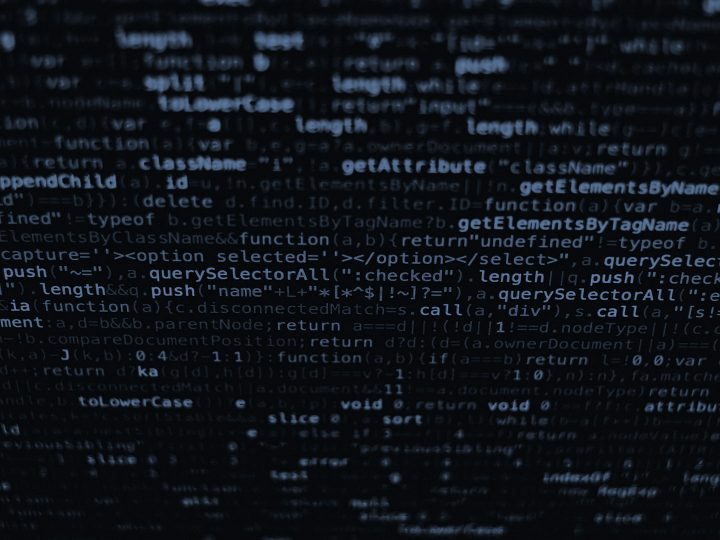The Instrumentalization of Gendered Narratives in the Search for Legitimacy of Terror Groups
The following is an essay from GIFCT’s Executive Director Naureen Chowdhury Fink, which first appeared in the Raisina Files 2025 journal, The Reckoning: Regression or Renaissance? produced by the Observer Research Foundation.
In the essay, Fink explores the intersection of technology, gender, and counterterrorism. She uses the case of ISIS and how it used gendered narratives in its search for legitimacy during the years of building its “caliphate,” and underlines the importance of considering this nexus when crafting sustainable and effective prevention and response strategies.
This insight was prepared by the author in their personal capacity. The opinions expressed in this piece are the author’s own and do not reflect the view of GIFCT.
***
Terrorist groups are often characterized by predominantly masculine narratives; think “terrorist” and what often comes to mind, and is reflected in popular portrayals, is the angry young man, in military-type clothing, and with combat-related lexicon reflected in the imagery. However, the emergence of ISIS (Islamic State in Iraq and Syria) in the early 2000s, and its emphasis on a state-building enterprise, brought with it an increased focus on women and girls as a means of legitimizing their narrative and facilitating the group’s purported political project of building a theocratic state. The outflow of supporters from across the globe to join ISIS resulted in the arrival of approximately 20,000 “foreign terrorist fighters” and their families—a conservative estimate—in the period around 2013-2017; UN estimates suggest that approximately 13 percent of those who travelled during that period were women, with some variations across different regions.
ISIS no longer has control of the territory it deemed “the Caliphate” and today exists as disparate groups or affiliates conducting terrorist attacks. The trends analyzed in this essay highlight the instrumentalization of gendered narratives and voices by terrorist and violent extremist groups to acquire legitimacy.
In contrast to the relative absence of women in the global narrative of the Al-Qaeda core, and building on the initiative of Al-Qaeda in the Arabian Peninsula which briefly produced al-Shamikah, an online magazine for women, ISIS emphasized the importance of women in building a true community for the faithful. They not only encouraged the presence of women and children in its territories, but developed a strong propaganda campaign appearing to highlight women’s voices, and thereby attempting to legitimize their narrative of building a community and not just a terrorist group.
Facilitated by the growth of social media platforms in the 2000s, women increasingly spoke for ISIS in their own voice—or at least claimed to do so—to complement and amplify the official messaging from the group welcoming the faithful from around the world to a new community with all the formal trappings of a state. Around the years 2014 to 2017, social media posts, statements, articles, and videos emerged, with riveting stories of travel, romantic endorsements of life in the “Caliphate,” and appeals for more to join them.
One story clearly remembered by analysts is that of Aqsa Mahmoud, a young woman from an affluent Scottish neighborhood who left her family in 2015 to join ISIS and thereafter motivated other young, and even much younger women to follow. Aqsa not only made the journey herself but took to social media to glorify life in ISIS-controlled territory. Her motivations appeared grounded in both religious rhetoric, on one hand, and base materialism, on the other—as she flaunted the homes and goods seized from local citizens and handed as rewards to those making the journey. In an entry on her Tumblr blog, parts of which betrayed her very young age, she gushed about how ISIS loyalists would receive “a house with free electricity and water provided to you due to the Khilafah (the caliphate or state) and no rent included… Sounds great right?”
Mahmoud categorically challenged the prevailing stereotype that all women joining ISIS were from poor and uneducated backgrounds; and as such, lent a veneer of legitimacy and immediacy to the narrative. As security studies professor Mia Bloom noted at that time, “Women already living amid ISIS fighters used social media adeptly to portray Syria as a utopia and to attract foreign women to join their sisterhood in the caliphate. The idea of living in the caliphate is a very positive and powerful one that these women hold dear to their heart.”
Gendered Roles in Extremist Narratives
The vilification of the West—by women who have lived in the West—played an important role in legitimizing narratives of the so-called Caliphate as a sanctuary and a reprieve from the ills of living among “unbelievers.” A Finnish convert, Umm Khalid al-Finlandiyya, once stated that, “As Muslims we need to disavow the disbelievers and live under the caliphate… it’s not even allowed nor is it good for you to reside in the lands of the disbelievers.” In 2014, British twins Zahra and Salma Halane publicly honored the anniversary of the September 11 attacks in the US through social media posts; they celebrated violence against the West, including the attacks on Charlie Hebdo’s office in Paris in 2015.
Even the system of slavery instituted by ISIS and the sexual and gender-based violence that was perpetrated by the group was legitimized through the public endorsement of women to reinforce the legal and historical arguments put forward by ISIS. Writing for ISIS’ English-language magazine, Dabiq, Umm Sumayyah al-Muhajirah sought to legitimize the practice of enslaving non-Muslim women and warned her peers against mocking or denying the legitimacy of the practice.
ISIS exploited gender stereotypes and leveraged the purported testimonies of women to validate their state-building enterprise. The group—and the women offering them public endorsements—made clear that women’s roles were to be centered around the home and family, and were unequivocal about the strict interpretations of religion and custom that would shape the parameters of women’s lives. This helped legitimize their appeal to supporters to leave their homes, families, and jobs behind and travel to the “caliphate” by reinforcing their adherence to traditional gendered norms. The proliferation of fast-communication tools offered by emerging technologies and social media platforms meant that women could now speak publicly from their own private spheres.
Gendered narratives were not, however, only targeted at women; men and boys were also the mark of narratives centered on traditionally masculine roles of fighting for and taking care of their communities. Groups like ISIS used notions of shame and narratives of emasculation to incentivize men and boys to join the cause; they were taunted by narratives that challenged their sense of self or abilities to meet the cultural expectations of men in certain contexts. Imagery glorifying battle and narratives leveraging women’s interests in perpetrating violence were intended to persuade young men to get involved. The availability of “sex slaves” was also highlighted as an incentive. Toxic notions of masculinity and the gamification of violence, where recruitment propaganda was often styled after popular video games, using their catchphrases and imagery, most often resonated with young men.
The Nazi Ideal, the Fighter, the “Tradwife”
ISIS is not the only terrorist group to have drawn on gendered imagery and deliberately engaged women to help legitimize its narratives. The Liberation Tigers of Tamil Eelam in Sri Lanka, up until their military defeat in the hands of the government in 2009, famously trained female suicide bombers. In this author’s discussions with practitioners leading rehabilitation and reintegration programs, these experts noted that recruitment efforts targeting women particularly emphasized opportunities to escape hierarchical cultural norms and traditions and assume a diverse array of roles, including as fighters.
Beyond offering a legitimizing narrative, women presented terrorist groups with opportunities to evade security measures or law enforcement scrutiny as gender stereotypes often meant that security checks were less stringent on women and girls. This author’s discussions with law enforcement and border security officials underscored that women and girls often received far less attention even in sensitive locations like airports or checkpoints. Gendered stereotypes have also often led analysts and practitioners to downplay women’s agency or motivations in joining terrorist groups, painting them as passive or subservient figures subject to the will of male family members in many instances. Similarly, many states focused on the repatriation or rehabilitation of women associated with ISIS have been slow to hold them accountable for crimes they may have committed in the conflict zones. Public opinion has also sometimes opposed the return of detainees associated with ISIS as the case of Shamima Begum highlighted.
Historically, images of women and families have been used to “soften” the image of authoritarian leaders or hardline groups. In Germany in the 1930s and early 1940s, the Nazis used imagery of families and children to harken back to a supposed “golden age” defined by clear gender roles and purposes—not very different from that which was idealized by ISIS. Images in official propaganda and government-sanctioned art would show families in farms and homes, reinforcing “family values” and the claimed superiority of the Aryan race. Women were central to the Nazi goal of a pure ethnocentric state—again, not very different from the ISIS notions—and therefore their health and well-being was essential, leading to the establishment of youth and women’s groups for that purpose. The Holocaust Museum in the US estimates that 13 million women were active in the Nazi party, serving as nurses, teachers, guards, and auxiliaries in the police and armed forces. Gertrude Schlotz-Klink, leader of the Nazi women’s league, said in a 1936 speech: “The National Socialist movement sees the man and the woman as equal bearers of Germany’s future…It asks, however, for more than in the past: that each should first completely accomplish the tasks that are appropriate to his or her nature.”
Contemporary far-right groups have continued this tradition, drawing on depictions of women, families, and children to legitimize their goals and ideals. In recent years, the “tradwife” movement, which perpetuates traditional gendered roles for men and women, has been associated with far-right groups seeking to establish a White ethnostate. Many of these images include rustic idealized settings, homogenous families and communities (read: White), modest or even old-fashioned clothing, and activities like farming and cooking. Women have also been central to the rhetoric of many groups justifying racialized or ideological narratives centered on the need to “protect” women from “the other.” As counterterrorism expert Elizabeth Pearson recently noted, “This gender binary—strong men must be ready to use force to protect weak women, especially from hostile alien men—is the core narrative of patriarchal, nationalist, ultra nationalist and also Nazi groups.
There have also been concerns about the instrumentalization of health and wellness programs by far-right groups or those perpetuating conspiracy-theory-based ideologies. Again, the central imagery of women appear to grant credibility to these programs, drawing on associations of women with roles as caregivers and mothers.
Terrorist and violent extremist groups have utilized gendered portrayals and narratives, and highlighted their appeal to women and families, as a means of signposting their legitimacy as an alternative social community. Moreover, the involvement of women has served to strengthen the notion of a long-lasting, multigenerational community. For example, Red Ice, a digital platform set up in 2002 by known anti-Semitic married couple, Lana Lotkeff and Henrik Palmgren, helped propagate white nationalist and “alt right” content during the years it was active online, including by amplifying female voices.
Counterterrorism, Women, and Peace
In recent years, the gendered stereotypes that terrorist and violent extremist groups have exploited to propagate their ideologies and legitimize narratives have informed a long-delayed focus on this issue among counterterrorism practitioners and policymakers. Although international actors, through the United Nations, have adopted numerous resolutions and initiatives to prevent and counter terrorism globally, the close relationship between the counterterrorism agenda, and that of women, peace, and security was not recognized until the adoption of UN Security Council Resolution 2242 in 2015, and subsequently, by states in the General Assembly. Nonetheless, there continues to be resistance to integrating the two agendas, and ensuring that gendered dimensions of terrorism and counterterrorism are adequately considered among policymakers and practitioners, remains a massive challenge. Indeed, funding and resource allocations to projects tackling these issues remain low.
Operationally, these biases appear to have informed the threat assessments and practices among many states and agencies; women have passed unimpeded through borders, evaded accountability for crimes committed in the conflict zones of Syria and Iraq, and been denied support and assistance required for rehabilitation and reintegration in many places. Border and law enforcement officials note how gender-related discussions are largely absent from their trainings and guidelines; few have had opportunities to discuss the different roles women might play, either as adversaries and threats, or as allies and partners, in countering terrorism. Moreover, the limited presence of women in security services and agencies complicates access and opportunities in some communities.
These dynamics are reflected in efforts both online and offline. As adversarial actors seek to exploit a wider range of emerging technologies and social media platforms to propagate terrorist and violent extremist content, so too, do risks and opportunities reflect a shifting online environment. The Global Network on Extremism and Technology, the research arm of the Global Internet Forum to Counter Terrorism, has produced a number of policy briefs for the private sector, practitioners, and policymakers to consider. These highlight the myriad layers in which gender, technology, and counterterrorism intersect, and underline the importance of considering these dimensions when crafting sustainable and effective prevention and response strategies.
States and counterterrorism practitioners must recognize the many and nuanced roles of women, and consider cases where women are forced or manipulated, while also recognizing the instances in which women choose to use their voice and lend credibility to the terrorists and violent extremists seeking to exploit them.
The Way Forward
The participation and contributions of women to terrorism and violent extremism, as in war and conflict, are not new. From Ireland to Chechnya, from Sri Lanka to Germany, women have played an important role in heightening the visibility and reach of groups with extremist agendas.
What was new in terms of the approach adopted by ISIS, and increasingly among contemporary far-right groups espousing or enabling violent extremist views, is the prominence given to women’s voices and gendered narratives. The proliferation of technological innovations and social media, and the access these create for individuals to create and amplify content, will likely continue to facilitate this trend. Prevention programs and interventions, including positive intervention measures and individualized support programs, need to better reflect the nuanced and diverse roles played by women, and deepen understanding of the impacts of gendered narratives on recruitment and mobilization.
Governments, the private sector, and international organizations, including regional and municipal authorities, should support opportunities for practitioners, policymakers, and industry to develop and share good practices and solutions, and ensure continuous and predictable funding for practitioners in the field. Organizations engaged in initiatives to prevent and counter violent extremism have often voiced concerns about uncertain and ad-hoc support, which has deep and negative impacts on developing risk and needs assessments and providing responsive support. Moreover, programs should ensure they do not operate on regressive assumptions of gendered roles; the means by which they address risks should be contextually tailored and informed by a close understanding of local and regional dynamics as well as global trends.
Increasing the number of women in the security sector and attenuating “counter-speech” or “counter-narrative” campaigns to address the gendered narratives and messaging from terrorists and violent extremists will remain critical. Experts have noted that the effectiveness of counter-speech rests heavily on the ability to target the right audience with a credible messenger and message; in many cases this is neither the government nor formal institutions, but civil society and community members who can authentically speak to the risks and experiences of those affected by terrorist and extremist violence.
To read the full Raisina Files 2025 journal, visit the Observer Research Foundation website.




